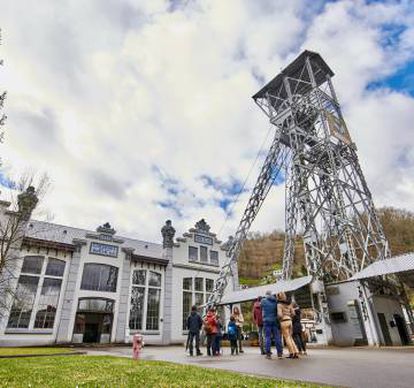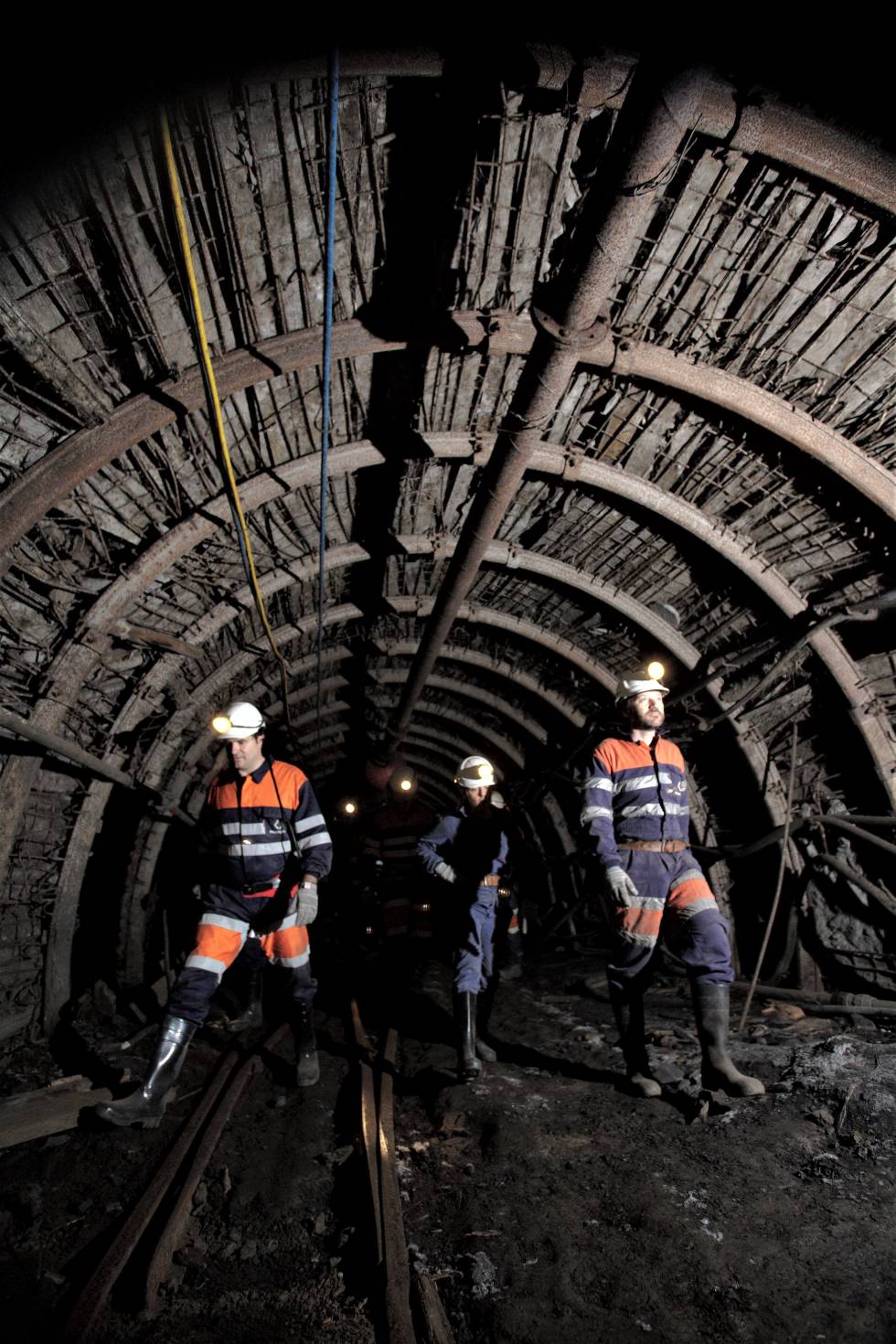
There was never such perfect darkness. The blackness is absolute and the silence is broken only by the breathing of the other visitors in the group. We are hundreds of meters underground, in a small passage that connects two drifts in the Pozo Sotón mine in Spain’s northwestern region of Asturias. There is very little space and it feels as though we are far from everything. The miner Nuria, who insists she is not “a guide,” has told us to turn off our helmet lamps. So we stand in the darkness in silence. The moment lasts just a few seconds, but there is something mystical about the experience, something metaphysical in the blackness and the absence that surrounds us. It is like not existing; like a brief journey to outer space, despite the fact we are actually occupying an inner space, deep within the Earth.
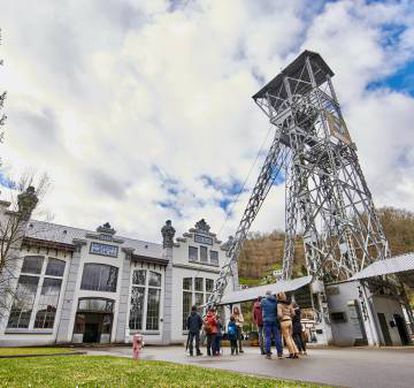
Located near the Asturian town of El Entrego on the banks of the Nalón River, Pozo Sotón – sometimes called the cathedral of mining – was a working mine from 1922 until 2014. At its entrance is a tribute honoring the hundreds of miners who lost their lives underground in the struggle against rock, landslides and explosions of firedamp, a flammable gas found in coal mines.
Asturias’s mines are close to becoming a thing of the past, despite the significant role they played in the region’s economy; everything stemmed from the mines – industry, railroads, steel, ports and shipyards as well as the labor movement. Now there is only early retirement; the mine produces nearly nothing. The Nalón River, once black from coal, is crystal clear.
The Pozo Sotón mine was opened to visitors in June 2015, not as a museum but as a real mine requiring visitors to don miner’s boots, overalls, a miner’s helmet, socks and even special underwear as the coal dust can reach up to the groin.
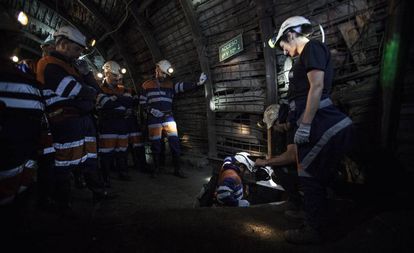
It’s quite a deal to go 556 meters underground. It’s deeper than the height of many of the world’s most famous skyscrapers – the Empire State Building in New York, for example, is 443.2 meters. In fact, underground Asturias could be Manhattan turned upside down, full of hollow interconnecting skyscrapers. You can enter one mine and emerge from another, as though you were wandering the tunnels of a subway network.
Pozo Sotón is connected to the legendary Pozo María Luisa mine, the protagonist of the famous mining anthem Santa Bárbara Bendita (or, Blessed Santa Barbara). Up to 6,000 kilometers of drifts have been dug in search of precious minerals. That’s almost twice the distance between Madrid and Moscow, but contained within a small area of coal-mining areas in the Caudal and the Nalón valleys that lie lush and green under an invariably gray Asturian sky. Today there is a constant drizzle –a fine, slow rain known in the Galician language as orbayu.
A 300-million-year-old souvenir
The first thing you hear when you go down in the cage – the mine’s elevator – is the loud metallic sound of the door closing. We are taken deep into the mine in the same way the miners once were, rapidly passing levels until we stop at level eight. Down here, it looks like a subway tunnel, only with worse lighting. It’s not that impressive until we find ourselves in the narrow passageway, or climb down a steep set of stairs to the deepest part of the mine, or when we are in an extremely tight spot and are given an eight-kilo hydraulic drill to cut into the coal.
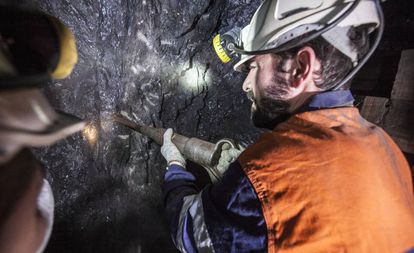
This is the first mine in the world that can be found on the Google Street View application – even here, underground, the tech giant can reach us. Of course, there is no cellphone coverage or internet connection. Just as well, as we are entirely focused on working the jack to chip off pieces of coal that have been there since the Carboniferous period some 300 million years ago. Later, when you take this piece of Earth’s distant past back home, it is hard to know where to put it.
When we squeeze again into a small, bumpy underground train, you try to imagine what these mines would be like filled with workers and the noise of drills, picks, guards, electricians and wagons. There is nothing left of that; the mine is like an empty mall in a zombie-style apocalypse. It’s sad, even though we know we need to reduce our carbon emissions, that coal is still being bought from other countries. Mining has not only been an economic driver, it has also shaped the character of these Asturian valleys, which have seen so much war and suffering.
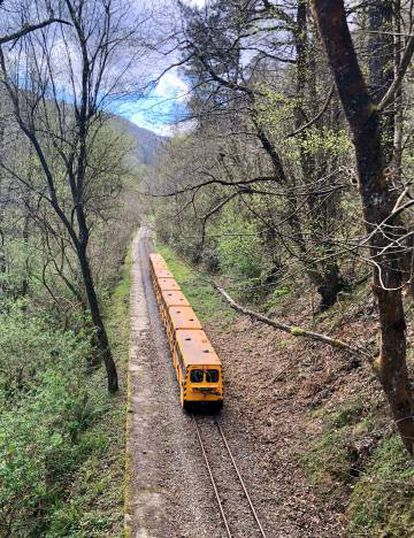
Leaving the mine on the 10th floor with coal-smudged faces, there is a sense of relief at having survived the journey to the center of the Earth. The work clothes come off and the water runs black as we shower off the dust.
In 2018, Pozo Sotón received just over 11,400 visitors, but it is far from being one of a kind in Asturias, as became clear at the Mining and Industrial Tourism Fair (Fetumi), which was held just six kilometers away from the Samuño Valley Mining Ecomuseum, near the town of Langreo.
At the Samuño Valley Mining Ecomuseum, a small yellow train takes visitors through forests and inside tunnels until stopping at the ground level of Pozo San Luis in the small village of La Nueva. It is here that we encounter an imposing modernist building that once housed the large industrial machinery used in the mine, which was opened by the company La Nueva Coal, and remained active between 1928 and 1969.
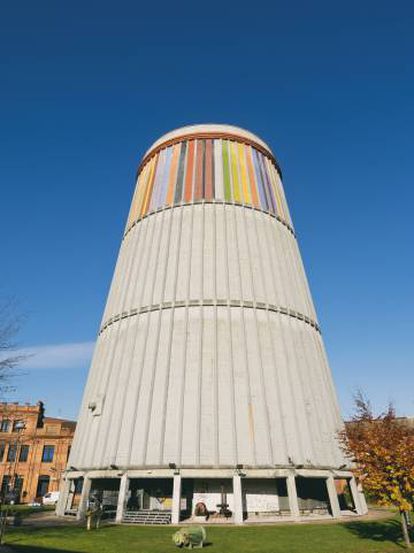
There is also the Asturias Mining and Industry Museum (MUMI), in the nearby town of El Entrego (L’Entrgu in Asturian), which offers insight into the industrial revolution and the oldest mining practices, covering its history, manufacturing and use of explosives. It also features mock up of a mine dubbed the “image mine,” and information on the Mining Rescue Brigade, which was on hand to save the lives of workers when all-too-frequent accidents occurred down the pit – the same brigade that made headlines for its role in the efforts to rescue two-year-old Julen Rosello, who fell down a borehole in Totalán, Málaga, last January.
Also in Langreo is the Iron and Steel Museum (MUSI), which is located in what was once the factory of the long-established company Duro Felguera. The museum includes a thick 45-meter-high cooling tower, which is now decorated in lively colors. Around this feature, visitors are initiated into the ins and outs of this mine-dependent industry, in which workers handled incandescent materials at high temperatures to create the steel scaffolding common to building sites.
Submarine mines
On the coast there is a curious mine called Arnao, located in the municipality of Castrillón, on the outskirts of Avilés. Along with the mines in Cornwall, along Britain’s southwest coast, the Arnao mine is one of the few in Europe whose tunnels lie under the sea floor. Closed in 1915, it is considered the oldest preserved mine on the Iberian peninsula. A visit here offers insight into the use of the valuable wooden headframe, the history of the mine itself, the company that operated it, the engineering involved, but above all, the stories of those who spent their lives inside it at a time when mining was dangerous and poorly paid. Significant sections of the deepest drifts are now flooded, lending them an eeriness. Outside, the Cantabrian Sea tears away at the rocks, creating a rugged, romantic coastline.

But this tour would not be complete without a visit to the mining town of Bustiello, built in the municipality of Mieres between 1890 and 1925 by the Spanish Coal Mining Society in the spirit of industrial paternalism.
The town was divided into a hierarchy reflecting the social differences specific to the era of the second Marquis de Comillas, a mining magnate of the late 19th and early 20th century, with the Church and God at the top, followed by the engineers while the most efficient miners occupied a rung above those considered to be revolutionaries.
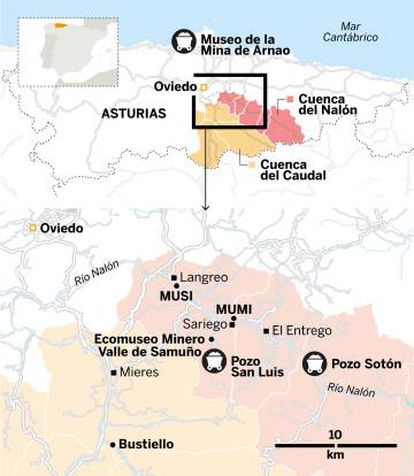
In Bustiello’s local cider tavern, talk of a worker’s revolution was not allowed, and only Catholic and non-socialist newspapers could be read. A Civil Guard officer, stationed on the bridge leading into the town, controlled who could enter and leave Bustiello. Those who lived there, lived well, and were provided with both a school and a hospital. It was a kind of social engineering experiment or, some might say, an early version of the welfare state.
In our current era of sophisticated technology and constant migration, the mining and industrial heritage stands as testament not only to manual work, other ways of exploiting natural resources and the trials and tribulations of wrestling with nature; but also tells of a different way of living, of companionship, effort and solidarity; of a culture that has all but been stamped out by the weight of progress and the unbearable lightness of bytes and networks.
Mining museums in Spain and Europe
Not all the industrial and mining tourism centers are in Asturias. Spain’s northeastern region of Catalonia also has the Museum of Science and Technology, with its network of 27 centers and heritage sites offering insight into the industrialization of this region.
You can also visit the Ponferrada Energy Museum in León province; the Castile and León Museum of Steel and Mining in Sabero (León); the Escucha Mining Museum in Teruel province; the El Soplao Cave in Cantabria, and the Arditurri mines and Mining Museum Foundation, both in the Basque province of Gipuzkoa.
Meanwhile, Huelva province has the Riotinto Mining Park where you can gaze upon Martian-like landscapes, inhabited by bacteria than can withstand extreme conditions. Add to this list the cinnabar (a form of mercury) mines of Almadén, in Ciudad Real, and the Almería mine where the Pulpí Geode – the largest accessible crystal cave in the world – can be found.
Further afield is the Industrial Route of Silesia, in Poland, where tourists can visit various mines, factories and museums, and the German Ruhr valley, which has been turned into an icon of industrial tourism.
Sergio C. Fanjul is the author of La Ciudad Infinita (or, The Infinite City).
English version by Heather Galloway.
Get real time update about this post categories directly on your device, subscribe now.







